Travel Guide, Ha Giang Loop
Ha Giang Loop in September Amidst Autumn Colors
Venturing into the northernmost reaches of Vietnam, the Ha Giang Loop stands as a beacon for adventurers, nature lovers, and cultural enthusiasts alike. The Ha Giang Loop in September presents an enchanting opportunity for travelers seeking to explore the heart of Vietnam’s natural beauty. As autumn casts its golden hue over the landscapes, this journey becomes the epitome of Vietnam travel, offering the best time to visit Ha Giang. The cooler climate and vibrant rice terraces make it a mesmerizing experience, encapsulating the essence of autumn in Vietnam.
Why September is Perfect for the Ha Giang Loop?
The Ha Giang Loop, a breathtaking circuit through Vietnam’s northernmost province, offers an unparalleled motorbiking or cycling adventure, especially when timed perfectly with the season. September stands out as a particularly magical month to embark on this journey, blending ideal weather conditions, vivid autumn colors, and a unique cultural experience that can only be found in this remote part of Vietnam.
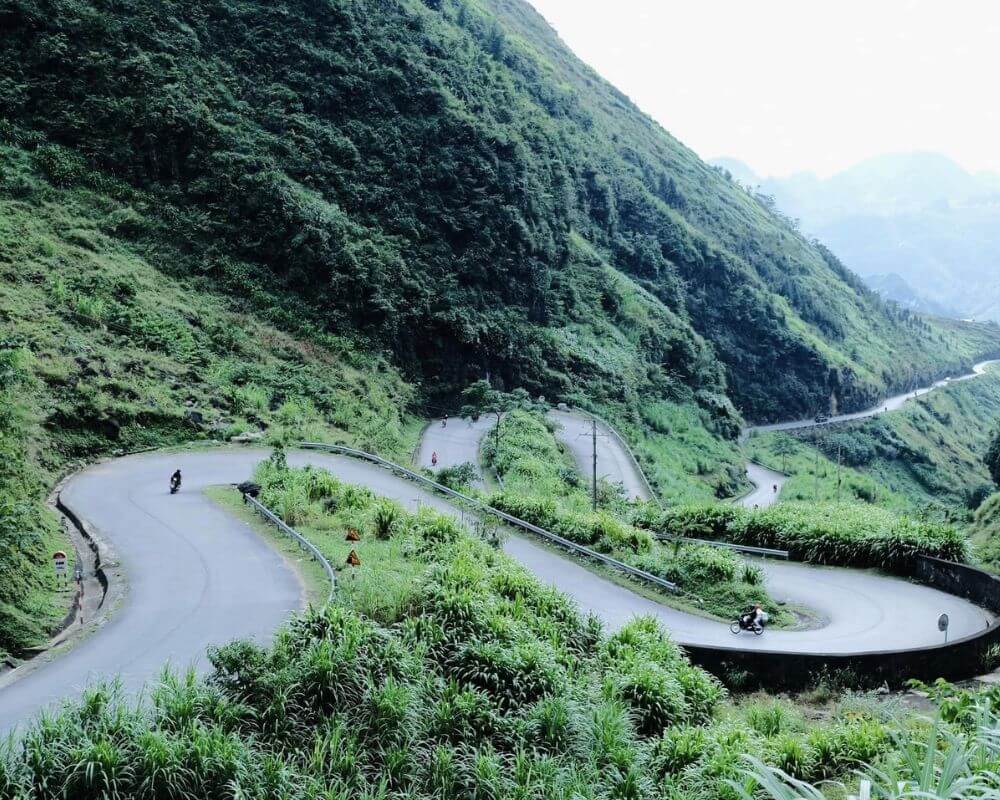
September marks the transition from the summer’s rain-filled days to the drier, clearer autumn skies in Ha Giang. This month is characterized by a noticeable drop in rainfall, leading to fewer disruptions and more predictable travel conditions for adventurers. The temperatures are comfortably cool, usually ranging from 18°C to 25°C (64°F to 77°F), which is ideal for the long hours spent outdoors exploring the loop. The reduced humidity and pleasant weather make it easier for travelers to enjoy longer rides without the discomforts of the hotter or wetter months, ensuring that the journey is as comfortable as it is visually stunning.
Autumn in Ha Giang paints the already spectacular landscapes with a richer palette of colors. The terraced rice fields, a signature of the region, turn a golden yellow, offering a mesmerizing contrast against the backdrop of lush green mountains. This seasonal transformation begins in September, making it a prime time to witness the harvest season’s beauty. The sight of the sun casting its golden light over the terraced fields during sunrise and sunset adds an ethereal quality to the already picturesque scenery, providing photographers and nature lovers with unforgettable vistas.
While Vietnam may not be the first country that comes to mind when thinking of fall foliage, Ha Giang Loop in September tells a different story. The province’s diverse elevation levels contribute to a unique display of autumn colors. The deciduous trees start to show hints of yellow, orange, and red, adding layers of depth to the mountainous landscape. This natural spectacle is relatively rare in the tropical climate of Vietnam, making Ha Giang a unique destination for those seeking the fall experience in Southeast Asia.
Must-See Attractions Along the Hidden Gems of Northern Vietnam
Along this path lie attractions that are as breathtaking as they are culturally significant. From UNESCO-listed geoparks to monuments symbolizing national pride and villages preserving ancient ways of life, here are the must-see attractions that reveal the hidden gems of Northern Vietnam.
Dong Van Karst Plateau Geopark: A UNESCO World Heritage Site
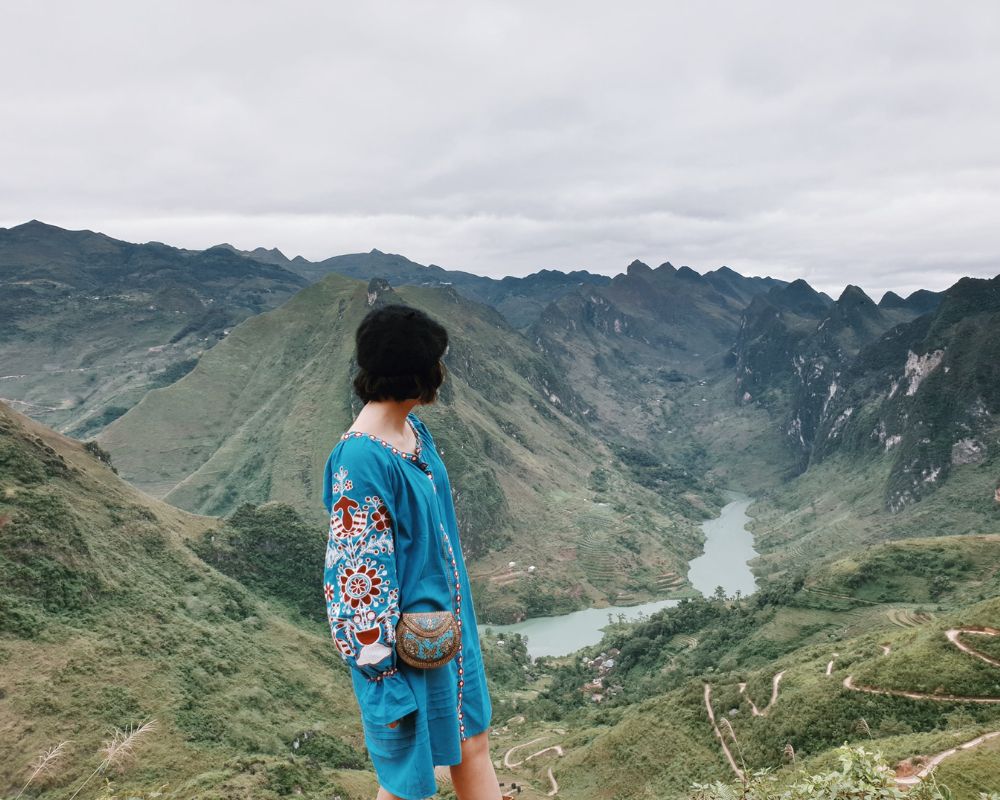
The Dong Van Karst Plateau Geopark, recognized by UNESCO for its striking geological features, is a highlight of any trip to Ha Giang. This vast area, characterized by towering limestone pillars and rugged valleys, is over 400 million years old, offering a glimpse into the Earth’s ancient past. Visitors are treated to a dramatic landscape that changes colors and textures with the seasons. The geopark is also home to several ethnic minority groups, whose traditional lifestyles and practices add a rich cultural layer to the natural beauty.
Exploring the geopark, whether by motorbike or on foot, provides opportunities for breathtaking photography, geological exploration, and cultural immersion.
Ma Pi Leng Pass: The King of Vietnamese Passes
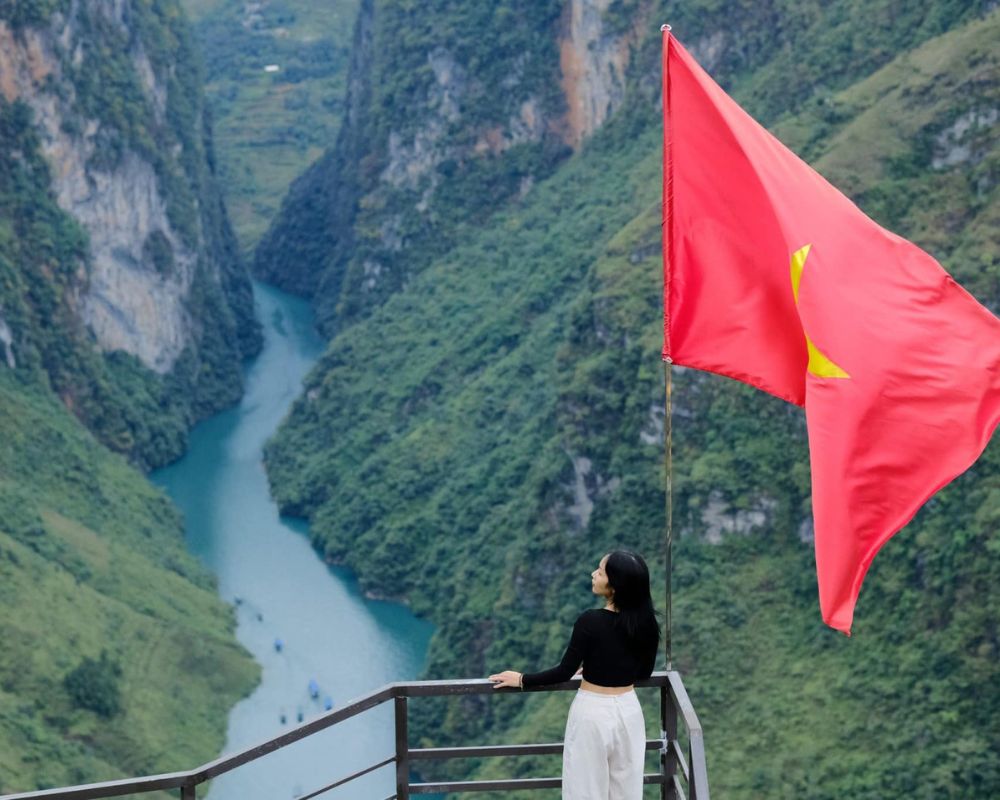
Often referred to as the “King of the Vietnamese Passes,” Ma Pi Leng Pass is a segment of the Ha Giang Loop that offers some of the most spectacular views in all of Vietnam. The pass winds through towering mountains and overlooks deep gorges, with the Nho Que River flowing majestically below. This challenging stretch of road is a testament to human resilience and engineering, constructed by local ethnic minorities over several years.
The viewpoint at the top of Ma Pi Leng Pass is a must-visit spot, offering panoramic views that are sure to take your breath away. It’s a place of reflection, where the sheer beauty and scale of nature’s creations can be truly appreciated.
Lung Cu Flag Tower: A Symbol of National Sovereignty
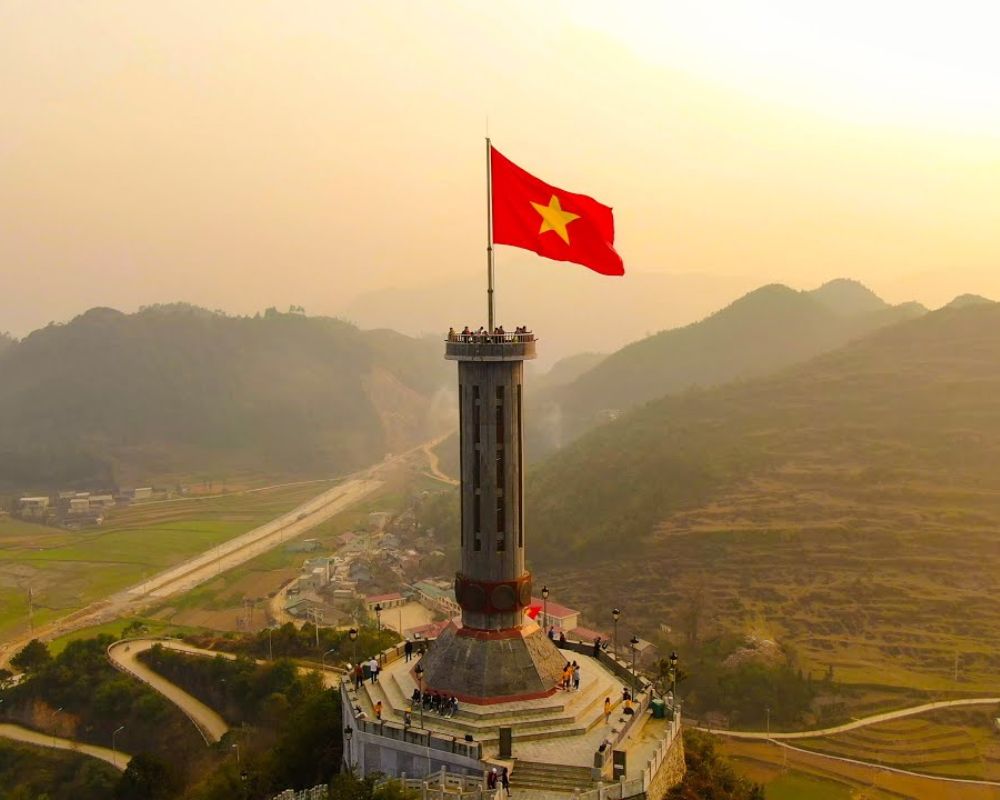
Standing tall in the northernmost point of Vietnam, the Lung Cu Flag Tower is a symbol of the country’s sovereignty and unity. Climbing to the top of the tower, visitors are rewarded with a flag waving proudly in the wind and views across the border into China. The area around Lung Cu is also significant, with rice terraces, traditional villages, and diverse landscapes that contribute to the region’s allure. The tower itself is not only a landmark for photo opportunities but also a place of historical and cultural significance, representing the strength and spirit of the Vietnamese people.
Ethnic Minority Villages: Preserving Traditions and Lifestyles
Scattered throughout the Ha Giang province are numerous villages inhabited by ethnic minorities, including the Hmong, Tay, Dao, and Nung. These communities offer visitors a unique opportunity to observe and engage with traditional ways of life that have been preserved for generations. From witnessing the intricate process of weaving and textile making to tasting local delicacies and participating in traditional festivals, visiting these villages is a deeply enriching experience. Many villages welcome guests into their homes and hearts, providing homestay accommodations that allow for a more immersive cultural exchange.
Essential Tips and Tricks for a Memorable Journey
Embarking on an adventure to explore the Ha Giang Loop, a breathtaking route through Vietnam’s most northern province, is a dream for many travelers. This journey promises not only stunning landscapes but also an immersive cultural experience. To ensure your trip is as memorable and smooth as possible, here are essential tips and tricks, covering itinerary suggestions, motorbike tour advice, accommodation options, and packing essentials.
Ha Giang Itinerary Suggestions
A well-planned itinerary is crucial for maximizing your experience on the Ha Giang Loop. A typical journey around the loop takes about 3 to 5 days, depending on your pace and interests.
Day 1: Ha Giang City to Quan Ba (Distance: ~50 km): Start your adventure in Ha Giang City, acquiring your travel permit before heading towards Quan Ba. The journey to Quan Ba introduces you to the breathtaking landscapes of the region. Don’t miss the iconic Heaven’s Gate and the Twin Mountains. Stay overnight in Quan Ba to experience local hospitality.
Day 2: Quan Ba to Dong Van (Distance: ~80 km): The route from Quan Ba to Dong Van is famed for its majestic scenery, including the Ma Pi Leng Pass, one of the most stunning passes in Vietnam. Dong Van offers a blend of cultural experiences and historical sites, such as the Dong Van Old Quarter.
Day 3: Dong Van to Meo Vac to Bao Lac (Distance: ~100 km): After exploring Dong Van, head towards Meo Vac through the Ma Pi Leng Pass, enjoying the incredible views of the Nho Que River. Continue to Bao Lac, where you can explore the local markets and interact with the ethnic communities.
Day 4: Bao Lac to Ha Giang City (Distance: ~100 km): Return to Ha Giang City, taking in the last views of the stunning landscapes. This day allows for a relaxed pace with multiple stops to enjoy the vistas or to visit any sites missed on the outbound journey.
Motorbike Tour Tips
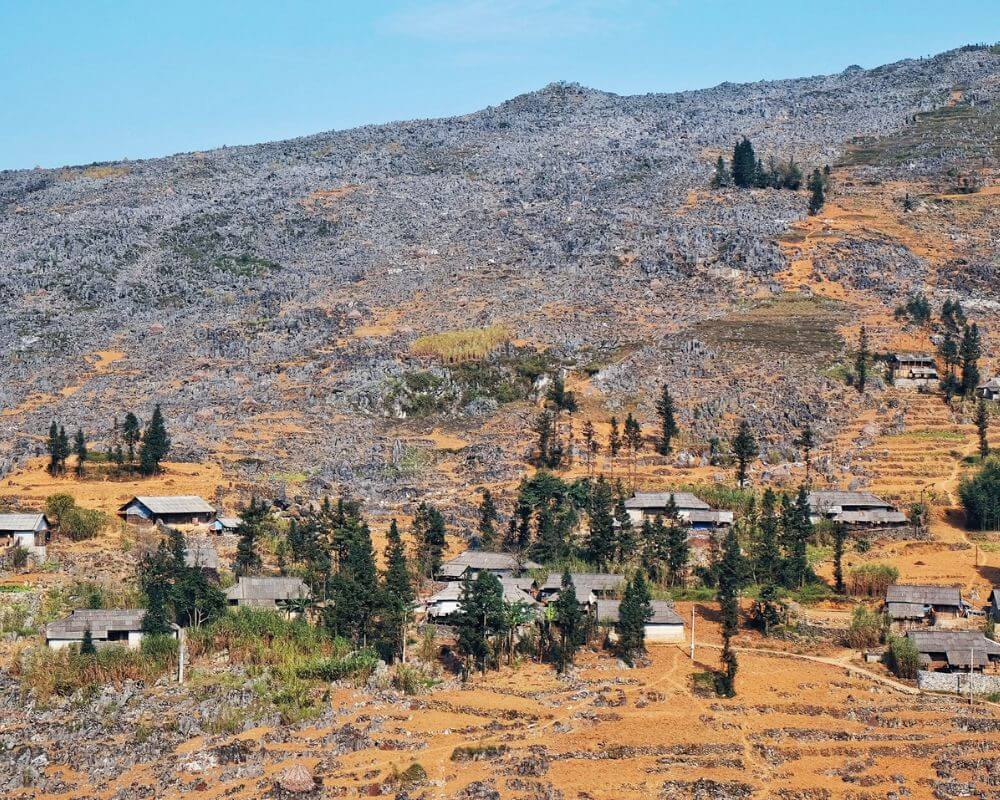
For many, motorbiking is the preferred way to experience the Ha Giang Loop, offering the freedom to explore at one’s own pace. If you’re not an experienced rider, consider taking a few lessons before your trip or hiring a motorbike with a guide. Ensure your bike is in good condition by renting from a reputable company and always do a test ride. Check the weather forecast to avoid rainy or excessively hot days, and plan your route, including rest stops and places of interest. Carry a basic repair kit and know the basics of motorbike maintenance.
Safety is paramount, so wear appropriate gear, including a helmet, gloves, and protective clothing. Lastly, respect local traffic laws and customs to ensure a safe and enjoyable journey.
Best bike rental places as reference:
|
Address |
Phone |
Average Price |
|
|
Hồng Hào |
10 Pham Hong Thai Street, Minh Khai Ward, Ha Giang City | 0353 982 928 | 180.000 VNĐ/day |
|
Motogo |
Group 1, Cau Me Village, Phuong Thien, Ha Giang (300m to the left from Ha Giang bus station, 5 minutes walk) | 0338 02 3344 – 0966 45 6969 | 190.000 VNĐ/day |
|
Phượt House Motorbikes & Tours |
01 Nguyen Trai Street, Ha Giang City | 0944 686 366 | 180.000 VNĐ/day |
Where to Stay in Ha Giang & What to Pack for the Ha Giang Loop
Accommodation in Ha Giang ranges from local homestays to guesthouses and hotels, catering to various preferences and budgets. Staying in homestays is highly recommended for those looking to connect with local cultures and enjoy home-cooked Vietnamese meals. Homestays also offer the unique opportunity to learn about the daily lives of the local ethnic communities. In Ha Giang City, you’ll find more conventional hotels and guesthouses, which are a good option for those seeking a bit more comfort before or after the loop. Booking in advance is advisable during peak travel seasons, but many places also welcome walk-ins, offering flexibility to spontaneous travelers.
Packing efficiently is key for a comfortable and hassle-free experience on the Ha Giang Loop. Essentials include a durable backpack, layers of clothing to accommodate fluctuating temperatures and rain gear. Protective motorbiking attire, such as a helmet, gloves, and jacket, is a must for safety. Don’t forget sunscreen, sunglasses, and a hat to protect against the sun. A first-aid kit, personal medications, and basic toiletries are also important. For navigation and capturing memories, bring a reliable map or GPS device and a camera or smartphone with extra batteries or a power bank. Lastly, carry enough cash, as ATMs can be sparse in remote areas.
Indulging in Local Flavors and Authentic Vietnamese Cuisine
A journey through Ha Giang is not only a feast for the eyes but also a culinary adventure, offering travelers the chance to indulge in local flavors and authentic Vietnamese cuisine. The province’s unique geography and cultural diversity contribute to a rich gastronomic landscape, with dishes and ingredients that may not be found elsewhere in Vietnam.
Banana Flower Salad: A popular appetizer in Vietnamese cuisine, banana flower salad is a refreshing and healthy dish. The salad typically consists of shredded banana flower mixed with herbs, vegetables, and sometimes cooked meat or seafood. The combination of textures and flavors, along with the tangy dressing, makes it a delightful dish to try in Ha Giang.
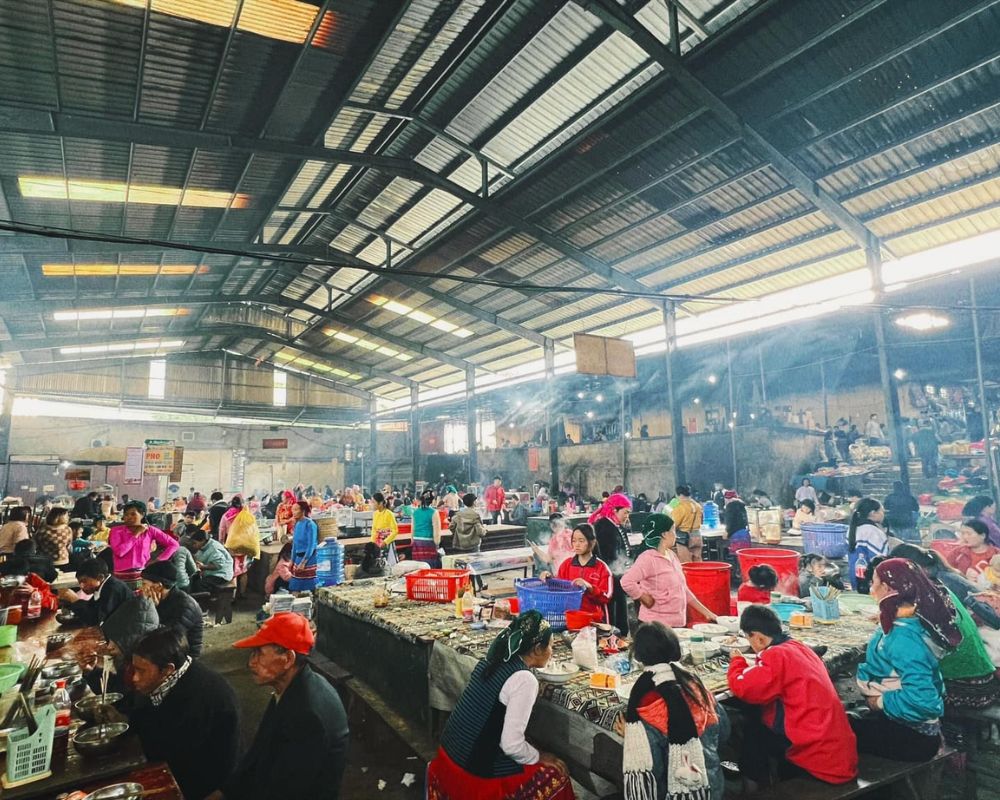
Thắng Cố (Horse Meat Soup): Thắng Cố is a traditional specialty of the ethnic groups in Ha Giang. This hearty soup features thinly sliced horse meat, organ meats, and a variety of local herbs and spices. It is often cooked for a long time to develop rich flavors. Thắng Cố is considered a delicacy in the region and offers a unique and adventurous culinary experience for those willing to try it.
Rice Wine Tasting: Rice wine is a popular alcoholic beverage in Vietnam, and Ha Giang is known for producing high-quality rice wine. Take the opportunity to visit local distilleries or home-based workshops where you can learn about the traditional rice wine-making process and sample different varieties. Each batch of rice wine can have distinct flavors and aromas, offering a glimpse into the local culture and traditions.
Travel Practices while Exploring the Ha Giang Loop in September
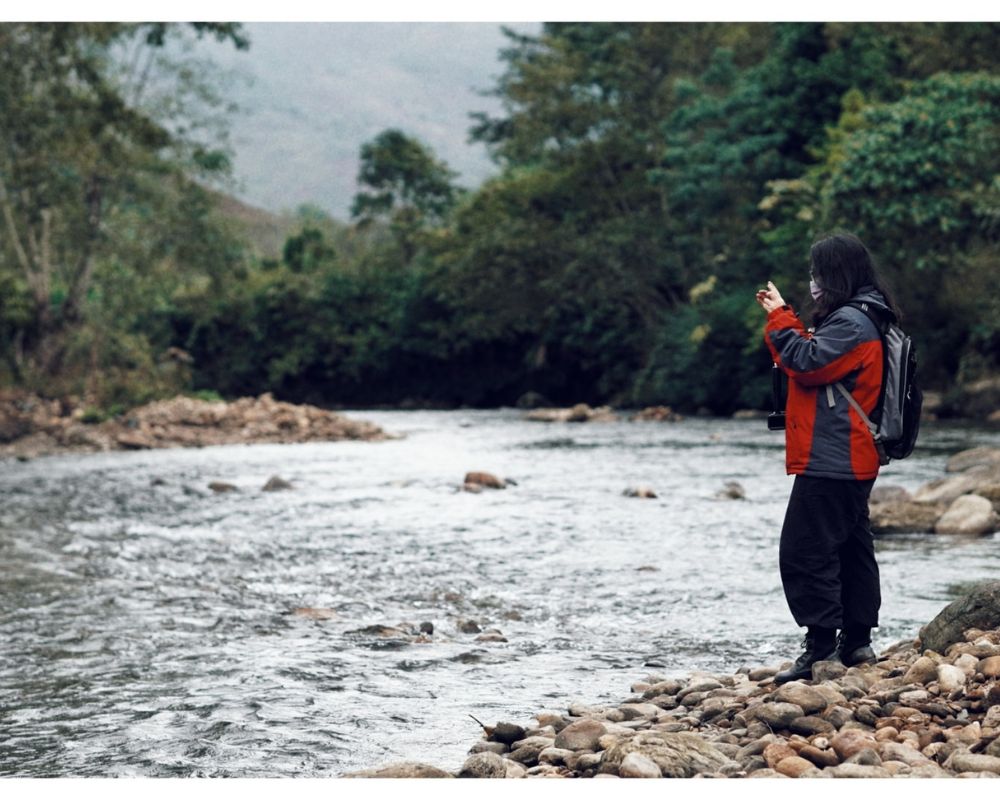
While exploring the Ha Giang Loop in Vietnam, it’s important to prioritize safety and practice responsible travel. Here are some precautions and guidelines to follow:
Before your trip, gather information about the area, including weather conditions, road conditions, and any potential safety hazards. Familiarize yourself with the route and plan your itinerary accordingly.
Consider hiring a local guide who is familiar with the area. They can provide valuable insights, ensure your safety, and help you navigate the challenging terrain. They can also introduce you to authentic cultural experiences and recommend responsible tourism practices.
If you’re planning to rent a motorbike or drive in Ha Giang, adhere to traffic rules and regulations. Wear a helmet at all times, drive at a safe speed, and be cautious while navigating the winding mountain roads.
Ha Giang is home to ethnic minority communities with their own distinct traditions and customs. Respect their way of life, dress modestly, and seek permission before taking photographs of individuals or their property.
Ha Giang’s weather can be unpredictable, so pack appropriate clothing and equipment. Bring rain gear, warm layers, and sturdy footwear suitable for hiking and exploring the rugged terrain.
FAQs
Is September a good time to visit the Ha Giang Loop?
September can be a good time to visit the Ha Giang Loop, as the weather is generally pleasant with mild temperatures. However, it’s important to note that September is part of the rainy season, so there may be occasional showers. It’s advisable to check the weather forecast and road conditions before embarking on the loop.
How long does it take to complete the Ha Giang Loop?
The Ha Giang Loop typically takes around 3 to 4 days to complete, depending on your pace and the number of stops you make along the way. The loop covers a distance of approximately 350 kilometers, including detours to various attractions and villages.
Do I need a motorbike license to ride the Ha Giang Loop?
Yes, you will need a valid motorbike license to ride legally in Vietnam. However, in practice, many tourists rent motorbikes without a license. It’s important to note that riding without a license is against the law and may invalidate your travel insurance. Renting a motorbike with a license and proper insurance is recommended.
Can I book accommodations and motorbike rentals in advance?
Yes, it’s advisable to book accommodations and motorbike rentals in advance, especially during peak travel seasons. This ensures availability and allows for better planning. However, if you prefer a more spontaneous approach, many places also welcome walk-ins, providing flexibility.
Conclusion
Experiencing the Ha Giang Loop in September is an unforgettable adventure that blends the natural splendor and cultural richness of Vietnam. It’s a journey that epitomizes the ideal autumnal voyage, making it a quintessential part of Vietnam travel during this season. Whether you’re a seasoned explorer or a first-time visitor, the loop’s breathtaking landscapes and warm hospitality promise a deeply rewarding experience.
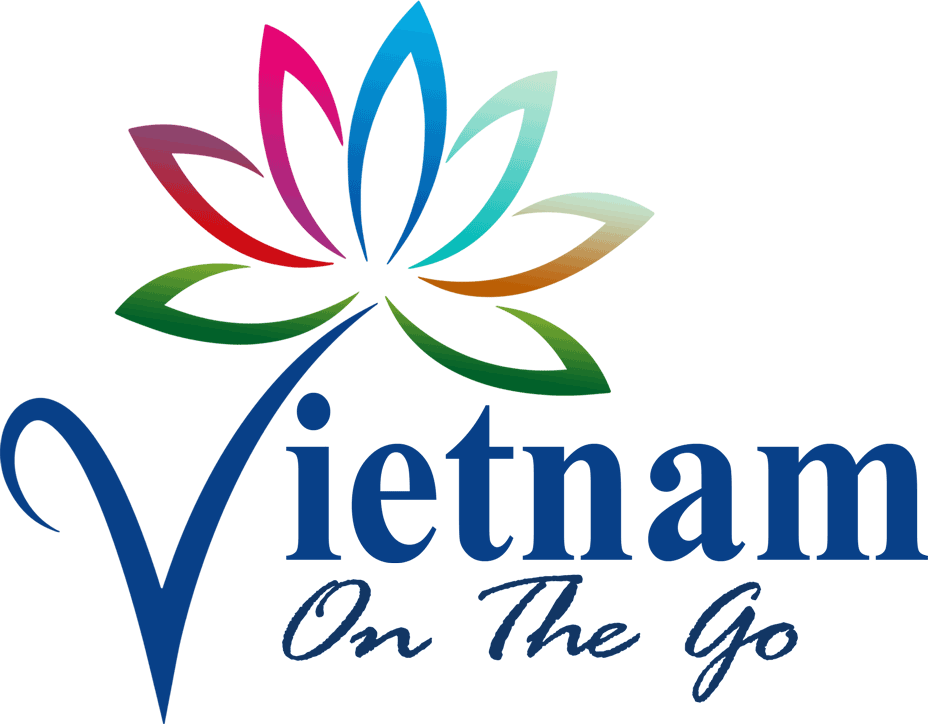
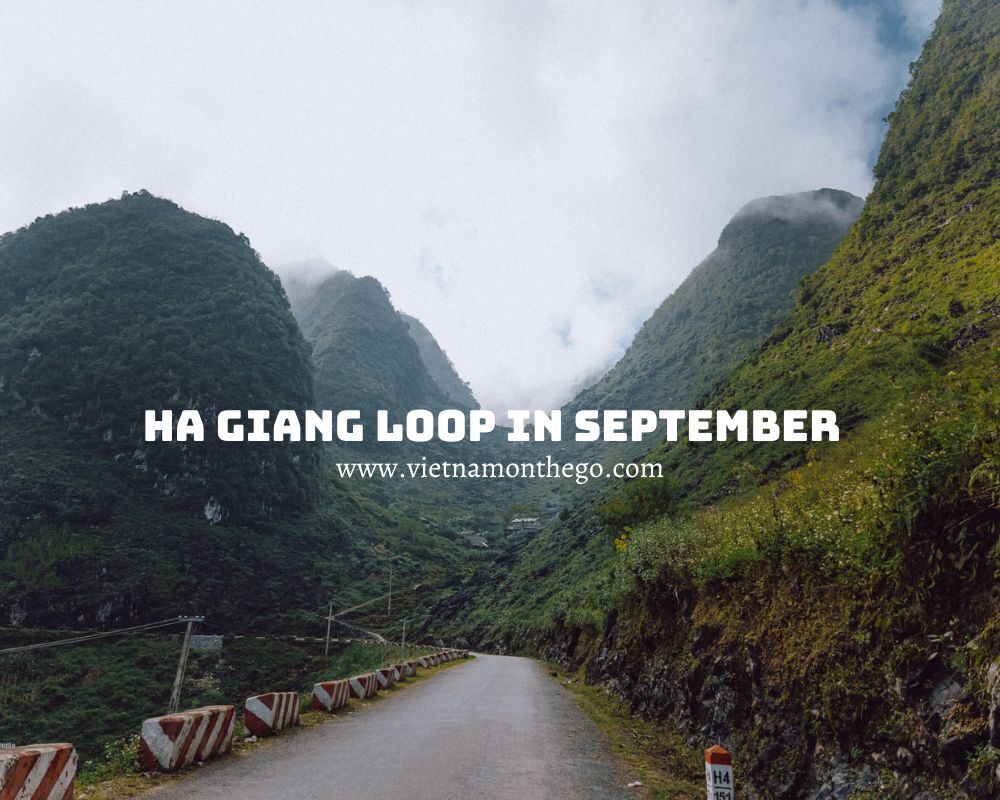
![[3 DAYS 4 NIGHTS] Ha Giang Loop Motorbike Tour from Hanoi](https://vietnamonthego.com/wp-content/uploads/2024/03/ha-giang-loop-tour-6-300x300.jpg)
![[4 DAYS 5 NIGHTS] Ha Giang Loop Motorbike Tour from Hanoi](https://vietnamonthego.com/wp-content/uploads/2024/03/ha-giang-loop-tour-300x300.jpg)